What Is a Retaining Wall | Types of Retaining Walls | How Retaining Walls Work | Retaining Wall Detail | Retaining Wall Anchoring Retaining Wall Systems
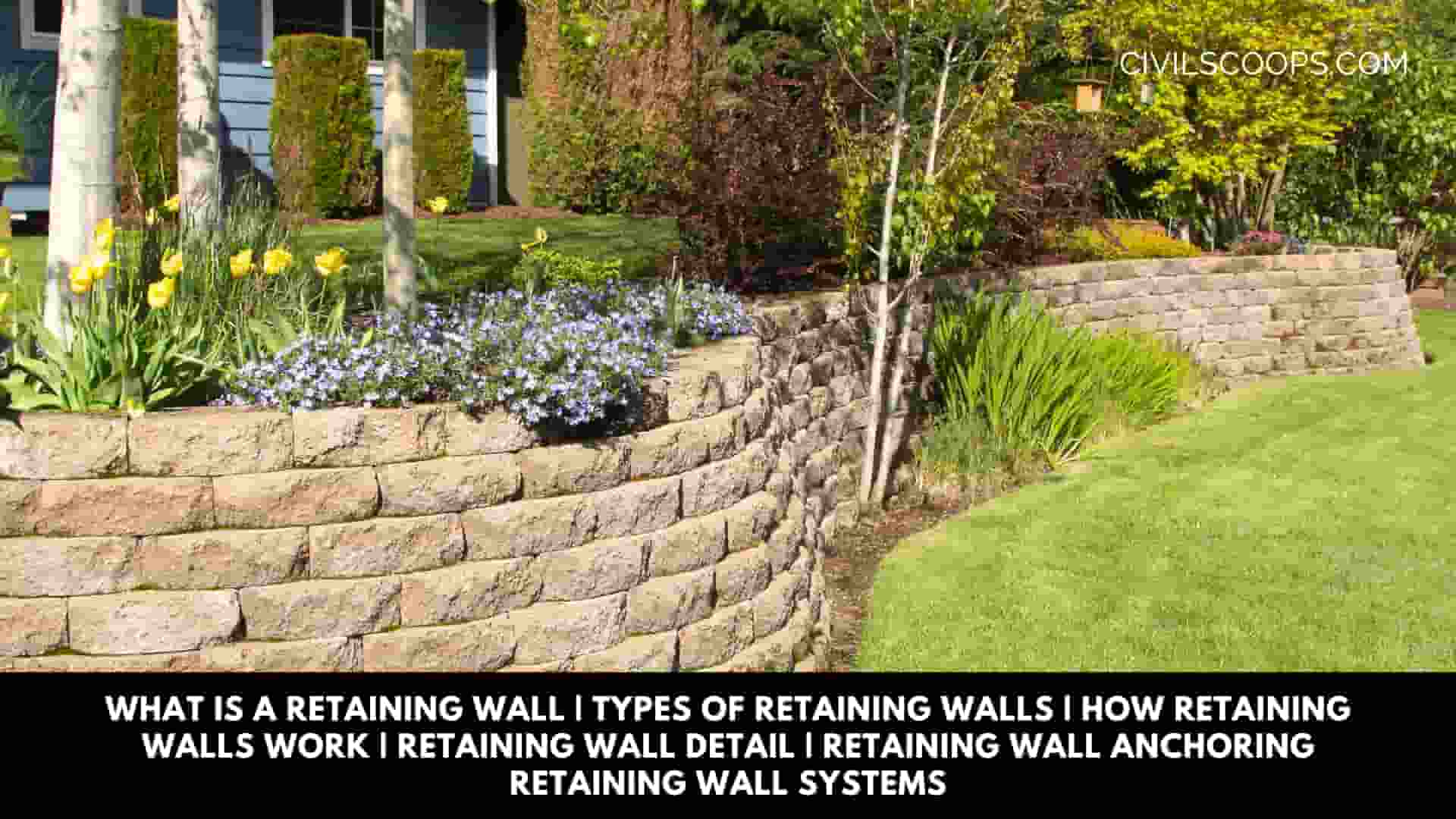
Table of Contents
What Is a Retaining Wall?

A retaining wall is a design of a structure; it is built when there is a desired change in ground elevation and to resist the lateral pressure of soil that exceeds the repose angle of the soil.
At different levels on the two sides supporting soil laterally retaining, walls are used. Where the soil is the slope, and the ground can’t resist naturally there, the retaining wall is constructed to resist the soil.
The pressure on the wall design value, it is important to have proper drainage behind the wall at the limit. In retaining walls to improve the stability of the material behind the wall, the drainage material will reduce or remove the hydrostatic pressure.
In retaining walls due to gravity, the retaining walls are constructed to prevent the tendency of the retained material to move down the slope by proper design and installation. The retaining wall is a wall that is constructed for more specific purposes like roadway overpasses or hillside farming.
Types of Retaining Walls
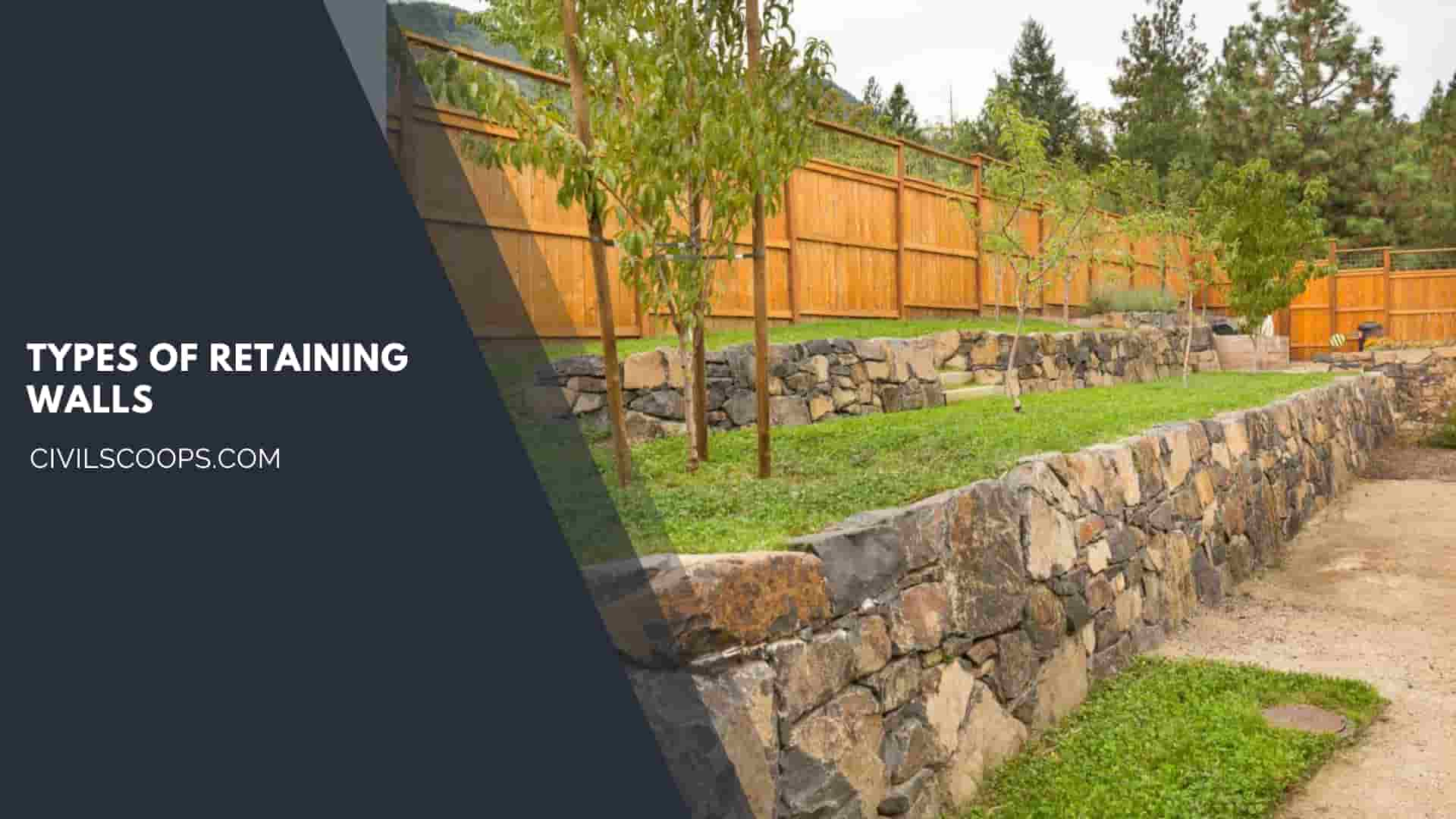
Many different types of retaining walls are below –
- Gravity Retaining Wall.
- Reinforced Retaining Wall.
- Buttressed Retaining Wall.
- Concrete Cantilever Retaining Wall.
- Mechanical Stabilisation Retaining Wall.
- Reinforced Soil Retaining Wall.
- Green Retaining Wall.
- Anchored Retaining Wall.
1. Gravity Retaining Wall
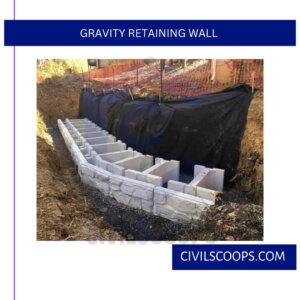
To improve stability by leaning back toward the retained soil gravity wall relies on their mass may have a batter setback and to resist pressure from behind.
They occur often made from mortarless stone and segmented concrete units for short landscape walls. In gravity, walls do not require a rigid footing and are relatively flexible.
2. Reinforced Retaining Wall
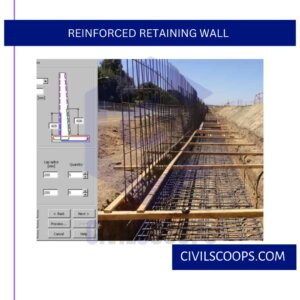
To provide stability against overturning reinforced concrete walls on the spread, the foundation is a gravity structure. It is provided by reinforcement bars and the weight of the walls.
3. Buttressed Retaining Wall
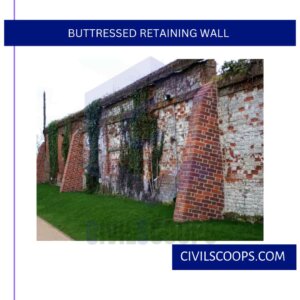
With the base slab and the back of the wall slab, the Buttressed retaining wall is a cantilever wall straightened with counter forts monolithic.
Connect the wall slab and the base of the counterfort to act as tension stiffness to reduce the bending moment in vertical walls of great height. For a height greater than 8 to 12 m, the counterfort is used for high walls.
4. Concrete Cantilever Retaining Wall
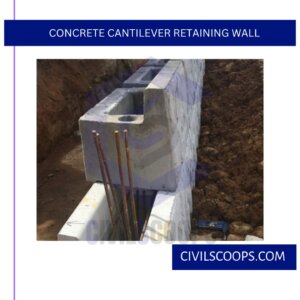
The concrete cantilever retaining wall most common type used as a retaining wall. The concrete cantilever retaining wall also consists that’s a type of wall, which is connected to the foundation.
The wall against overtaking and sliding by the weight of the backfill and surcharge also stabilises; this slab foundation is also loaded by backfill.
5. Mechanical Stabilisation Retaining Wall

Which walls that can tolerate some differential movement are named mechanically stabilized earth walls. Whilst retaining the backfill soil, the wall face is infilled with granular soil.
There doesn’t require a framework of mechanical stabilization wall this is the advantage of the walls. By using steel or geotextile soil reinforcement, mechanically stabilized walls are made.
6. Reinforced soil Retaining wall
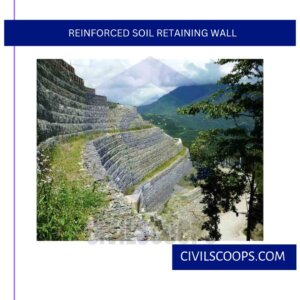
The reinforced soil retaining walls use as an alternative to the use of reinforced concrete. The reinforced soil retaining walls use as used retaining walls if they are built as an integral part of the design.
And the other solutions as a result of the ground conditions and the grounds of the economy.
7. Green Retaining Wall
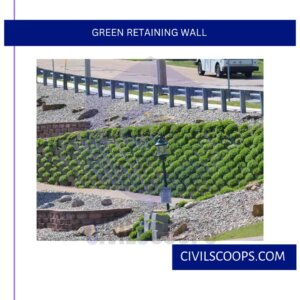
To retain more gentle slopes, green retaining walls can be used. To stabilize it, a geo-cellular structure such as a series of honeycomb cells can be implanted into the surface of the slope.
After that, to stabilize a geo-cellular structure, individual cells can be planted.
8. Anchored Retaining Wall
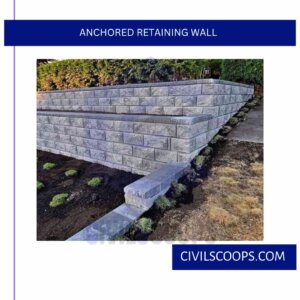
When we need to include additional strength in the rock or soil behind by using cables or other stays anchored, an anchored retaining wall can be constructed.
At the end of the cable, it usually drove into the material with boring anchors that are then expanded. In the soil, which expands to form a bulb.
How Retaining Walls Work?
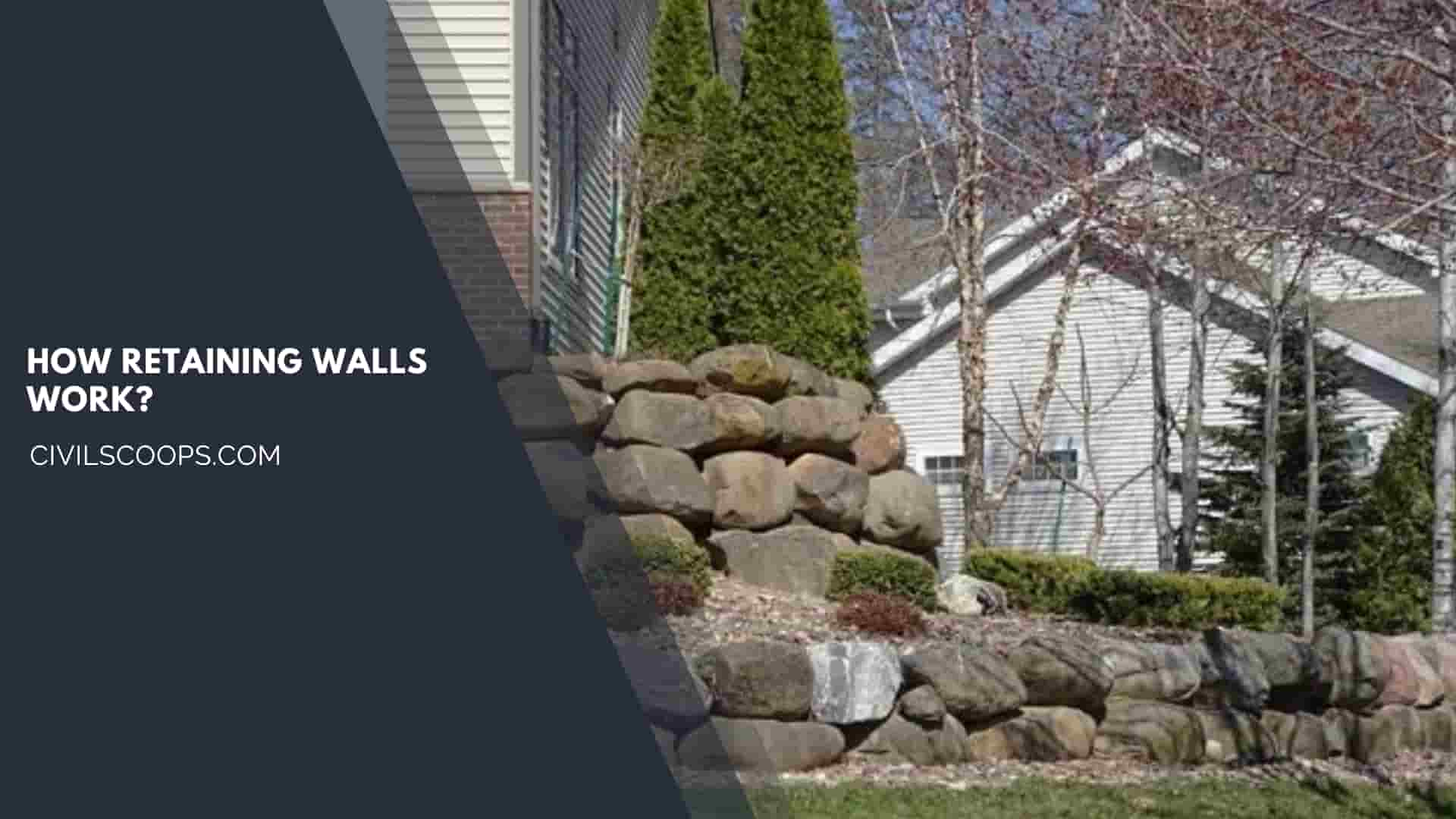
There have been many works of retaining walls that are below.
- The work of retaining walls is to prevent the landscape from the construction site.
- The work of retaining wall is it is built when there is a desired change in ground elevation and to resist the lateral pressure of soil that exceeds the repose angle of the soil.
- Another work of retaining wall is that, where the soil is the slope, and the soil can’t resist by naturally there the retaining wall is constructed to resist the soil.
- When we need to include additional strength in the rock or soil behind by using cables or other stays anchored, a retaining wall is constructed.
Retaining Wall Detail
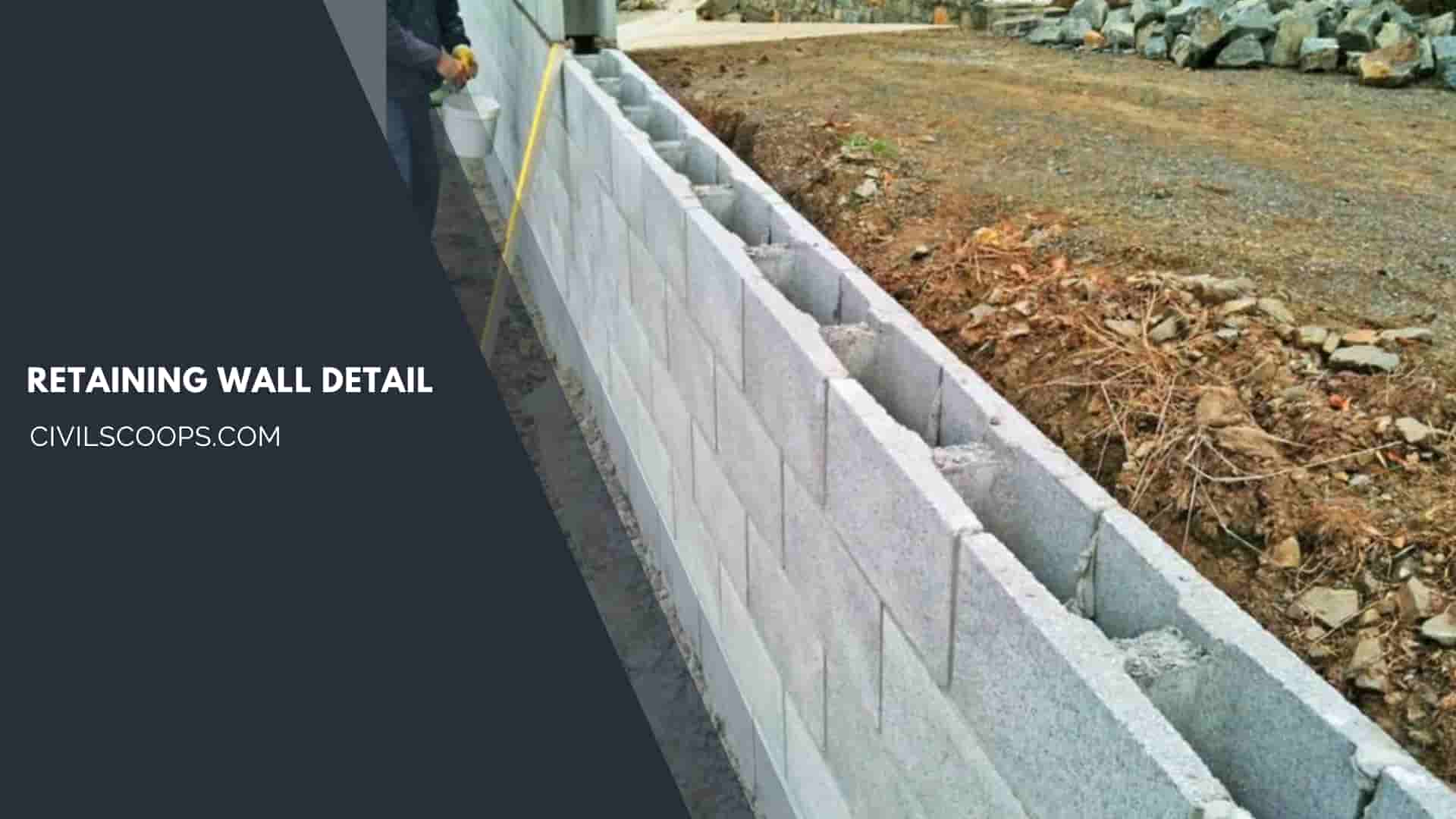
The detail of retaining is below.
- A retaining wall is a design of a structure; it is built when there is a desired change in ground elevation and to resist the lateral pressure of soil that exceeds the repose angle of the soil.
- Where the soil is the slope, and the soil can’t resist naturally there, the retaining wall is constructed to resist the soil.
- At different levels on the two sides supporting soil laterally retaining, walls are used.
- In retaining walls to improve the stability of the material behind the wall, the drainage material will reduce or remove the hydrostatic pressure.
Retaining Wall Construction
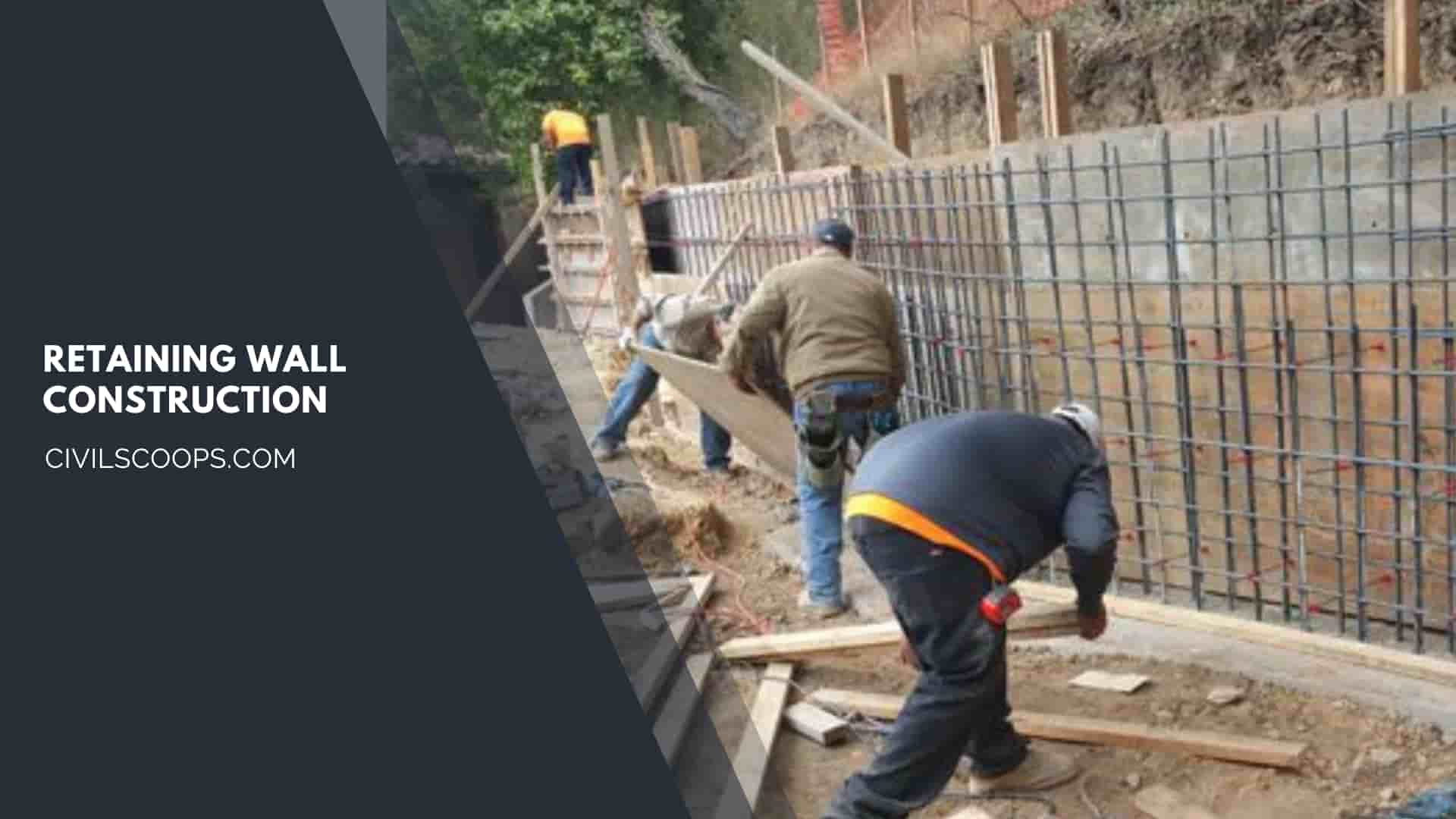
- Retaining walls are generally designed at different levels on the two sides of the soil to provide rigid walls used for supporting soil laterally.
- A retaining wall is a design of a structure; it is built when there is a desired change in ground elevation and to resist the lateral pressure of soil that exceeds the repose angle of the soil.
- The pressure on the wall design value, it is important to have proper drainage behind the wall at the limit.
- In retaining walls to improve the stability of the material behind the wall, the drainage material will reduce or remove the hydrostatic pressure.
- Where the soil is the slope, and the soil can’t resist naturally there, the retaining wall is constructed to resist the soil.
Retaining Wall Systems
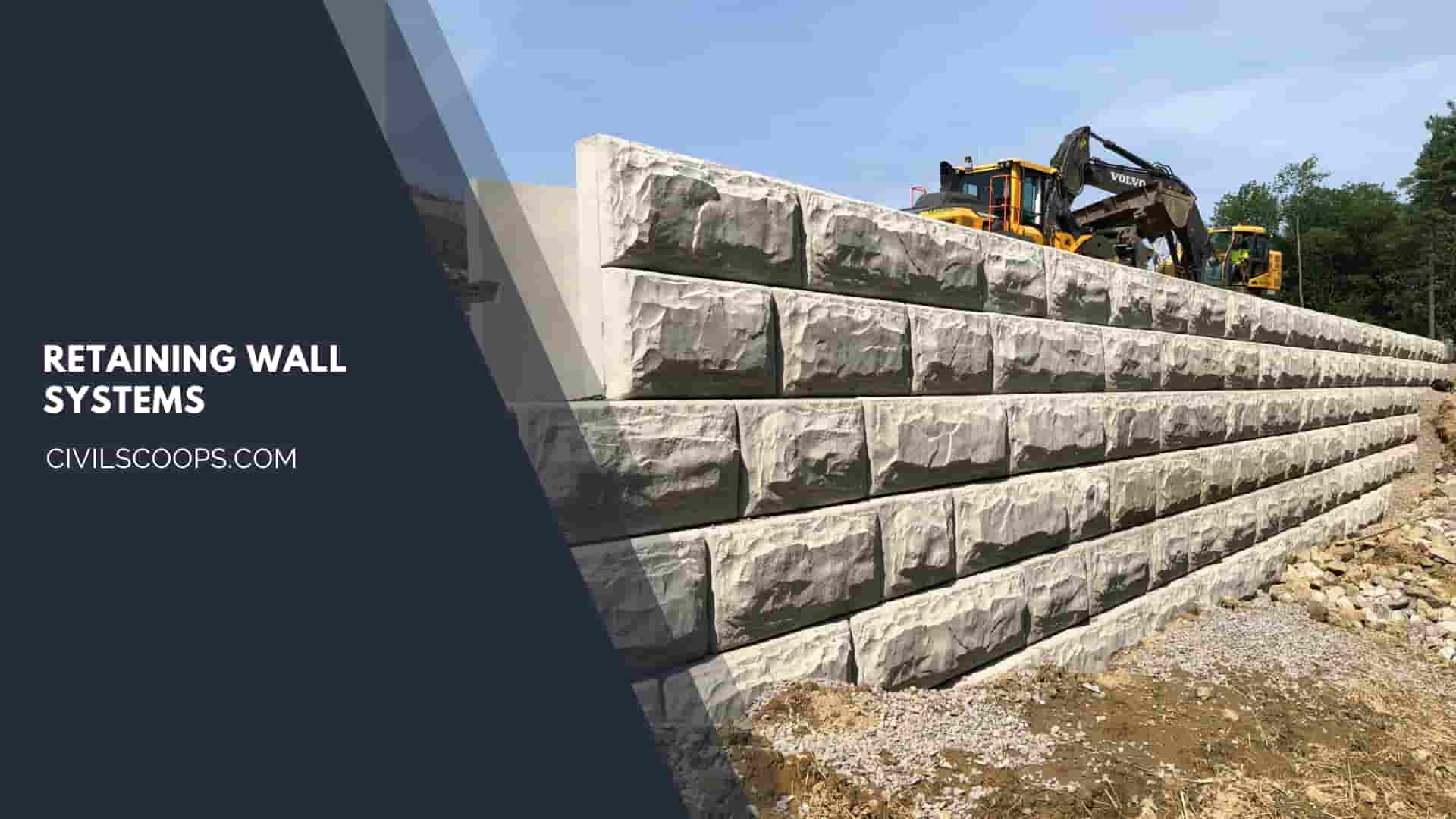
- The system of retaining walls is typically designed at different levels on the two sides of the soil to provide rigid walls used for supporting soil laterally.
- The system of the retaining wall is it is constructed to prevent the tendency of the retained material to move down the slope by proper design and installation.
- The system of retaining is it is constructed at different levels on the two sides supporting soil laterally retaining.
- It is constructed systematically for slopes where the soil can’t resist naturally there the retaining wall is constructed to resist the soil.
Retaining Wall Anchoring
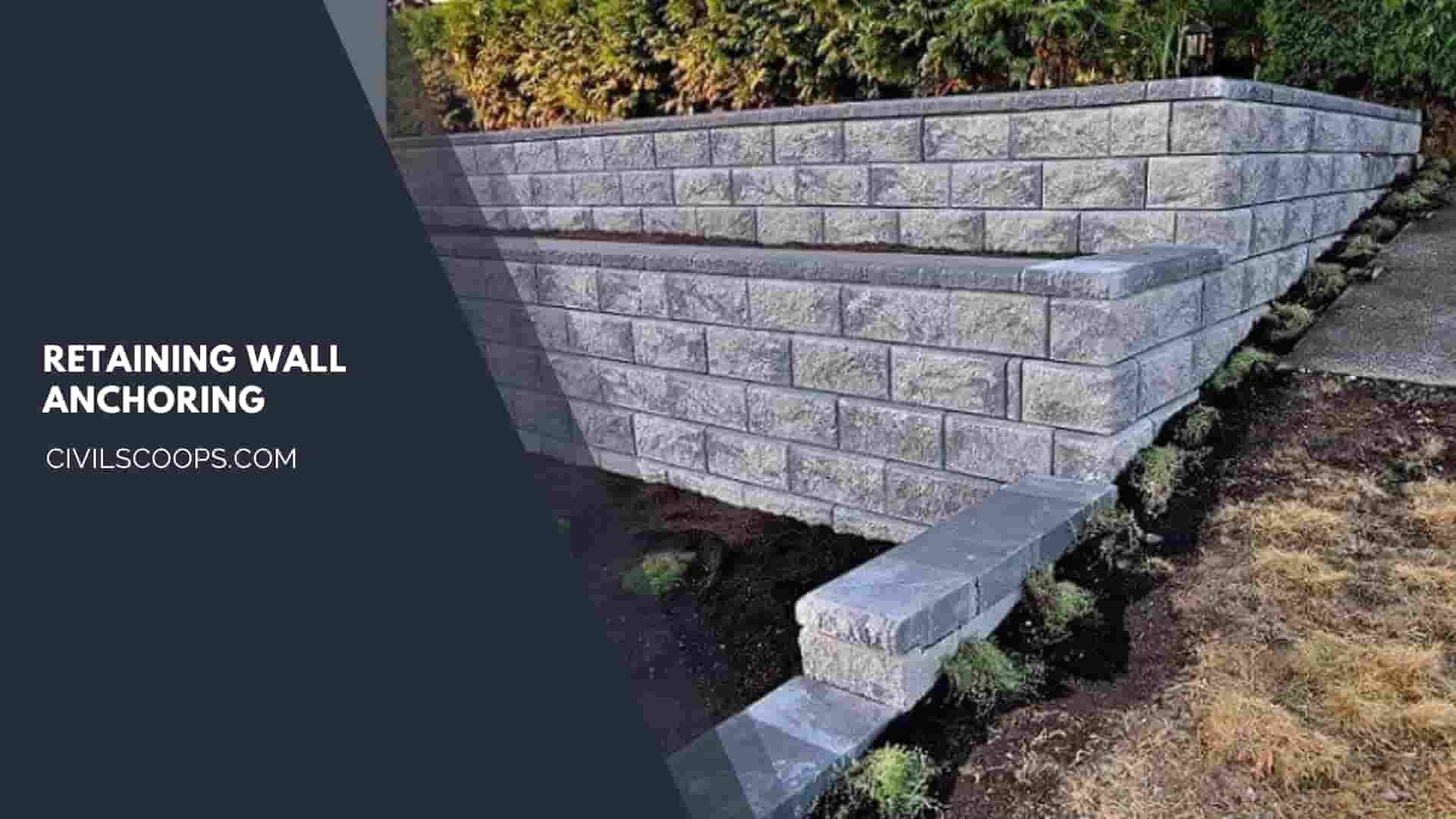
Anchored retaining wall is the most important wall in the retaining walls.
- When we need to include additional strength in the rock or soil behind by using cables or other stays anchored, an anchored retaining wall can be constructed.
- At the end of the cable, it usually drove into the material with boring anchors that are then expanded.
- In the soil, which expands to form a bulb.
Retaining Wall Options
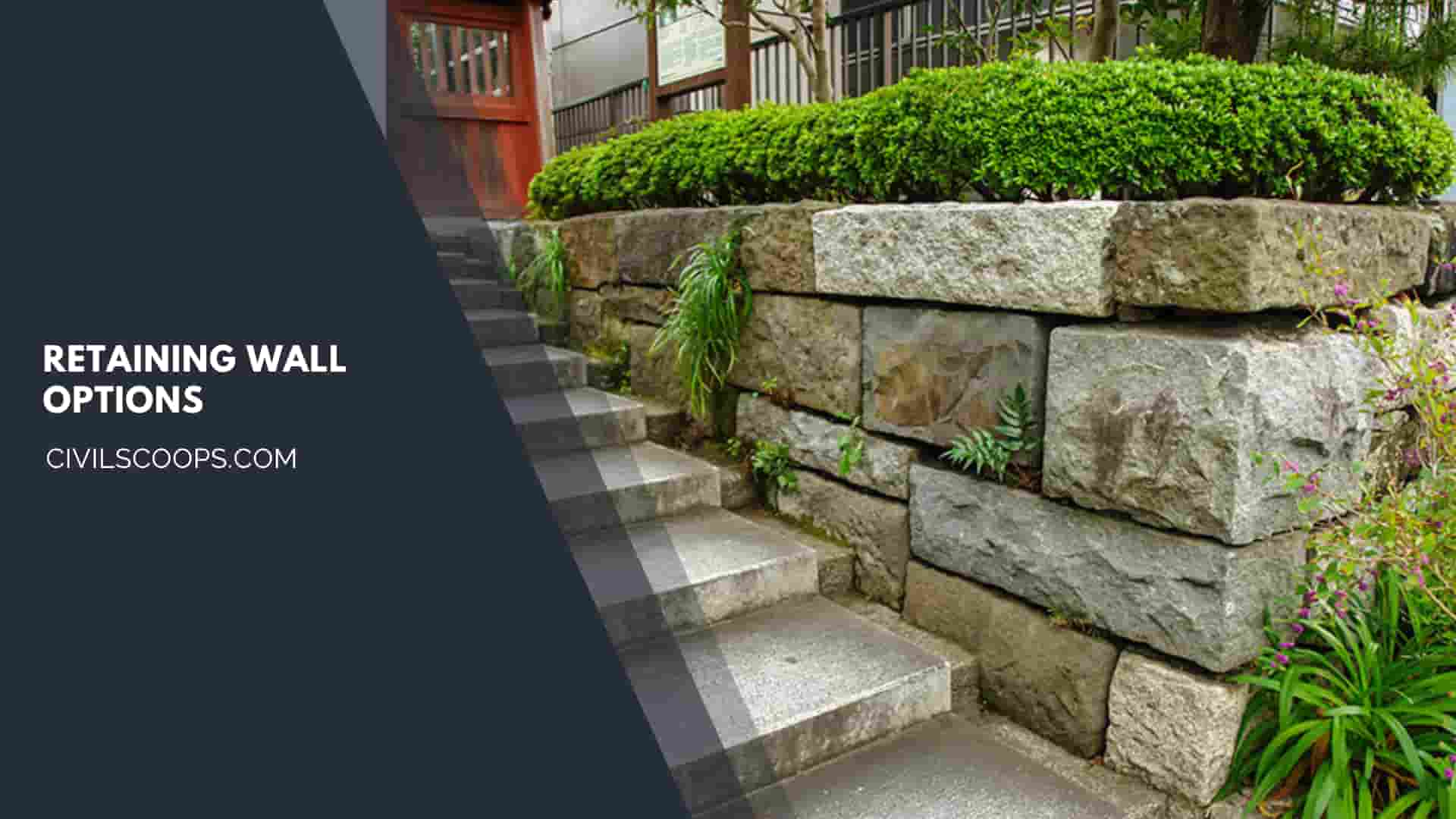
There are basically four types of retaining walls that are below.
1. Gravity Wall
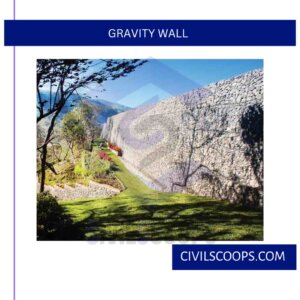
- To improve stability by leaning back toward the retained soil gravity wall relies on their mass may have a batter setback and to resist pressure from behind.
- They occur often made from mortarless stone and segmented concrete units for short landscape walls.
- In gravity, walls do not require a rigid footing and are relatively flexible.
2. Cantilever Retaining Wall
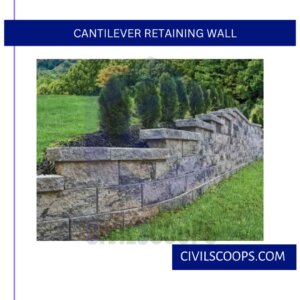
- The cantilever retaining wall most common type used as a retaining wall.
- The cantilever retaining wall also consists that’s a type of wall, which is connected to the foundation.
- The wall against overtaking and sliding by the weight of the backfill and surcharge also stabilizes; this slab foundation is also loaded by backfill.
3. Anchored Wall

- When we need to include additional strength in the rock or soil behind by using cables or other stays anchored, an anchored retaining wall can be constructed.
- At the end of the cable, it usually drove into the material with boring anchors that are then expanded.
- In the soil, which expands to form a bulb.
4. Sheet Piling Retaining wall
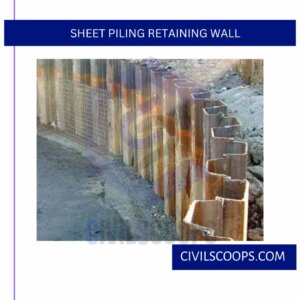
- A sheet piling retaining wall is a thin layer of steel, vinyl, or wood that is driven directly into the soil.
- To provide additional reinforcement, there has a vertically corrugated structure.
[su_box title=”FAQ” style=”default” box_color=”#333333″ title_color=”#FFFFFF” radius=”3″ class=”” id=””]
What Is a Retaining Wall?
Retaining walls are relatively rigid walls used for supporting soil laterally so that it can be retained at different levels on the two sides. Retaining walls are structures designed to restrain soil to a slope that it would not naturally keep to.
What Is a Retaining Wall Used For?
Retaining walls are often found in places where extra support is needed to prevent the earth from moving downhill with erosion. The most basic function of a retaining wall is to battle gravity; the lateral force of the slope must be offset in the retaining wall’s design. Retaining walls can also: Provide usable land.
How to Reinforce a Retaining Wall?
The wall can be strengthened by transferring some of the shear force to the base where the wall meets the ground. This can be done by either extending the footing of the base or placing concrete to thicken the base. Installing anchors or tiebacks is another option for extra strength.
What Is Retaining Wall in Construction?
A retaining wall is a structure that serves to prevent a mass of matter, usually earth or rocks on a slope, from falling or collapsing.
Is a Retaining Wall Considered a Structure?
Retaining walls are permanent, protective structures that separate lower land from higher land. The walls act as barriers to hold back soil, which would otherwise cave in, slump, or slide into a lower area. Retaining walls are typically built with stone, brick, cinder blocks, or concrete.
Retaining Wall Anchoring
Wall anchors are long rods driven through the retaining wall and attached to anchors that have been planted into the earth behind the wall. The rods are then tightened and a wall plate is added, bringing the wall back to the desired position.
What Is Gravity Retaining Wall?
Gravity retaining walls are walls that use their own weight to resist lateral earth pressures. The main forces acting on gravity retaining walls are the vertical forces from the weight of the wall, the lateral earth pressure acting on the back face, and the seismic loads.
Should Retaining Wall Blocks Be Glued?
Retaining wall blocks typically do not need adhesive to lay each course.
How Retaining Walls Work?
Retaining walls are designed to restrain soil, or engineering fill, at an angle steeper than the material’s angle of repose – the steepest angle it can hold naturally, without failing. To do this, they need to be able to withstand the horizontal – or lateral–earth pressure, exerted by the material being retained.
What Are the Different Types of Retaining Walls?
- Gravity retaining walls.
- Cantilever retaining walls.
- Embedded retaining walls.
- Reinforced soil retaining walls.
What Is the Least Expensive Retaining Wall?
The cheapest type of retaining wall is poured concrete. Prices start at $4.30 per square foot for poured concrete, $5.65 for interlocking concrete block, $6.15 for pressure-treated pine, and about $11 for stone. Installation or supplies, such as drainage stone or filter fabric, are not included.
Will a Retaining Wall Hold Back Water?
Retaining wall installation is one of the most effective drainage solutions available. If built properly, these hardscapes will stop water and move it away from problem areas, protecting your property from water damage.
What Is the Strongest Type of Retaining Wall?
Concrete and Masonry Retaining Walls
Poured concrete is the strongest and most durable choice for retaining walls. It may also be carved and formed to look like mortared stone depending on your taste.
Why Are Retaining Walls So Expensive?
The labor required to build a retaining wall can be extensive. Therefore, labor costs can quickly add up. Depending on the project’s complexity, the wall’s size, and material type, labor costs can range from $15 to $40 per square foot. However, on average, most contractors charge between $50 and $75 per hour.
How Tall Can a Retaining Wall Be?
between 3 feet to 4 feet high
Generally, between 3 feet to 4 feet high. But there are different factors to consider, including the material you use for your wall, the landscaping, and the purpose.
What Do I Need for a Retaining Wall?
- Interlocking Retaining Wall Block.
- Landscape Fabric.
- Gravel/Drainage Aggregate.
- Construction Adhesive.
- Paver Base.
- Mason Line.
- Landscape Stakes.
- Marking Paint.
What Is Cantilever Retaining Wall?
Cantilever retaining walls
Cantilever walls are built using reinforced concrete, with an L-shaped, or inverted T-shaped, foundation. This kind of retaining wall consists of a stem and a base slab (or footing) that sits under the backfill.
[/su_box]
[su_note note_color=”#F2F2F2 ” text_color=”#333333″ radius=”3″ class=”” id=””]
Like this post? Share it with your friends!
Suggested Read –
- 10 Construction Certifications and Where to Get Them
- What Is Hardened Concrete | Properties of Hardened Concrete
- What Is Plaster | Types of Plaster As Per Material | Defects In Plastering
- What Are Hollow Bricks | Advantage of Hollow Bricks | Disadvantage of Hollow Bricks | Sizes of Bricks Blocks | How to Make Hollow Bricks
- What Is Fire Escape Staircases | Types of Fire Escaping Stairs | What Is the Importance of Fire Escape in the Building | What Are the Fire Staircase Requirements
[/su_note]
